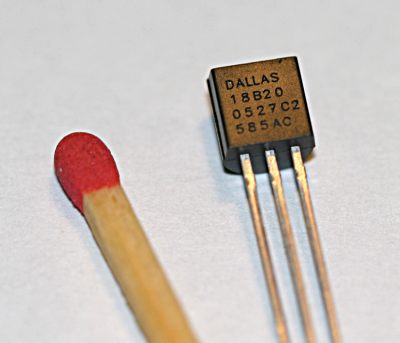
The datasheet is here: DS18B20.PDF (Acrobat Reader required).
This sensor can be operated in a number of different modes, including connecting several sensors together on the one common line. For the temperature logger I use the simplest arrangement, with each sensor on a separate line, and providing power to each sensor.
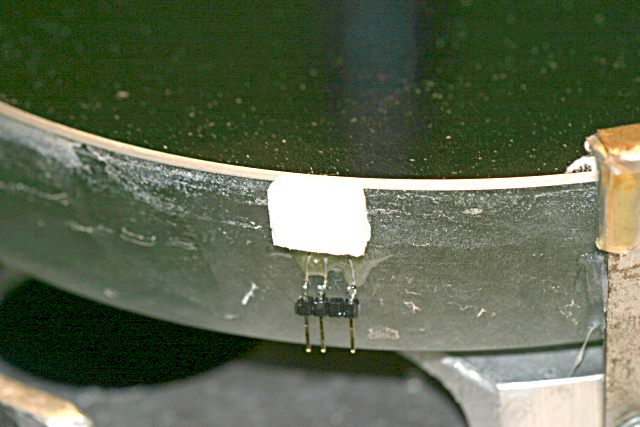
My, that mirror looks grubby. Must be time for another clean...
The sensor is then covered completely with an insulating cap made from styrofoam. The styrofoam is held to the glass with a small amount of araldite (epoxy resin). I was concerned about possible stress on the mirror from this so I used only the smallest amount that I could.
The sensor is mounted onto a 4-pin wide strip of header which has one of the middle pins removed so that I can easily attach a connector and there is no doubt which way is the right way. In the matching plug I filled the unused hole with epoxy resin so that the plug will not go on the wrong way.
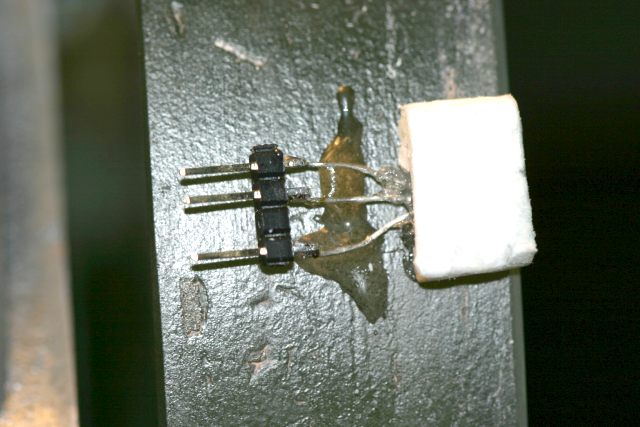
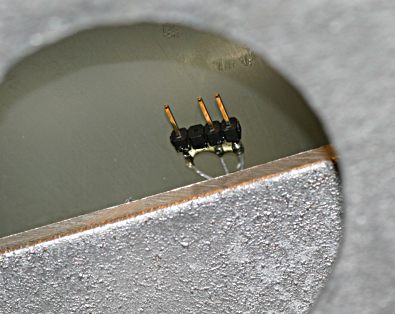


You can just about make out that the empty hole is filled with epoxy resin to block it up and prevent the plug going on the wrong way around.
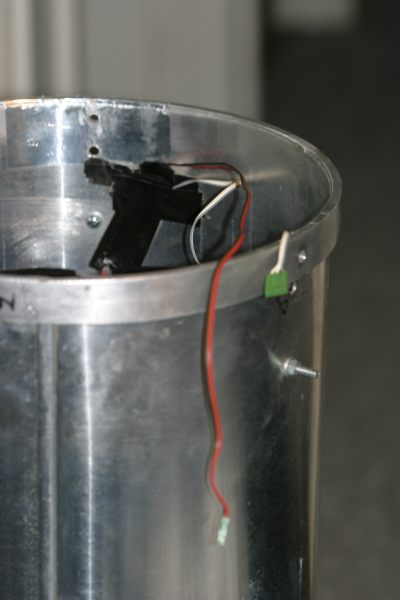
The primary mirror and cell are not in the tube (obviously). You can see the mounting holes for the mirror cell near the end of the tube.
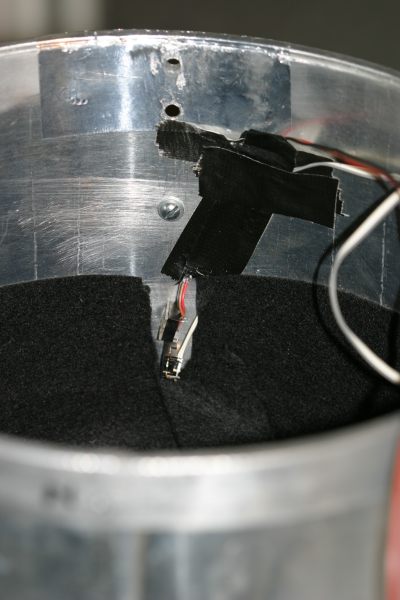
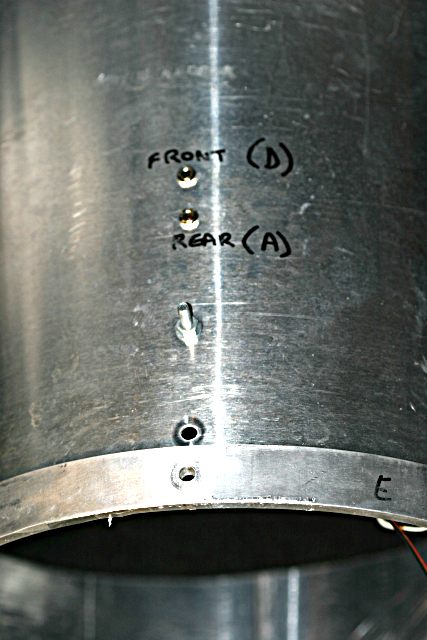
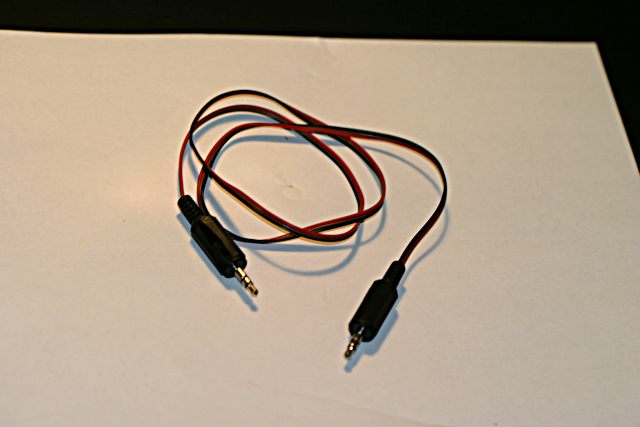
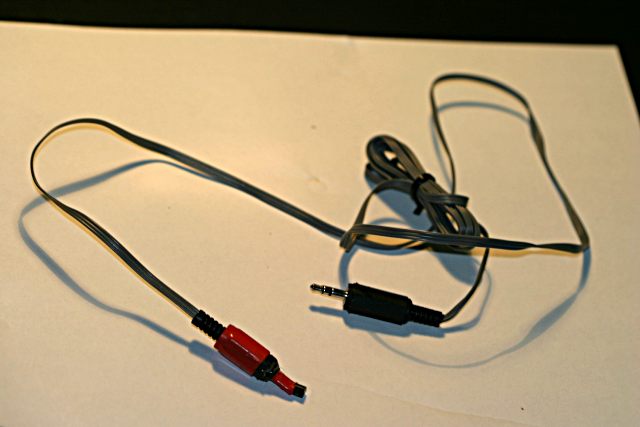
I used an empty 3.5mm backshell to support the sensor, and filled it with expoxy resin to hold it in place.
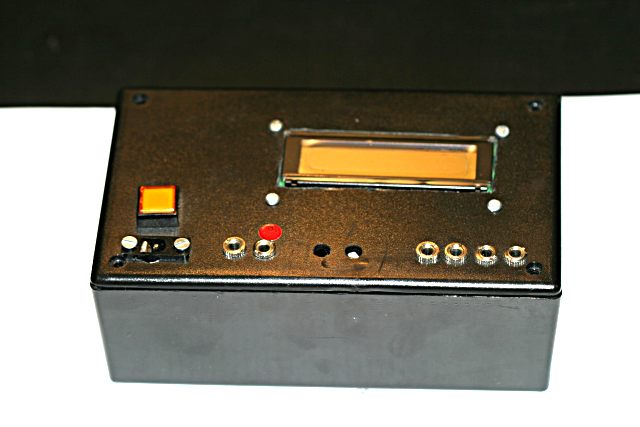
The other socket on the left is connected to the programming socket on the PicAxe microcontroller and I use that to upload the program to the microcontroller when I change it.
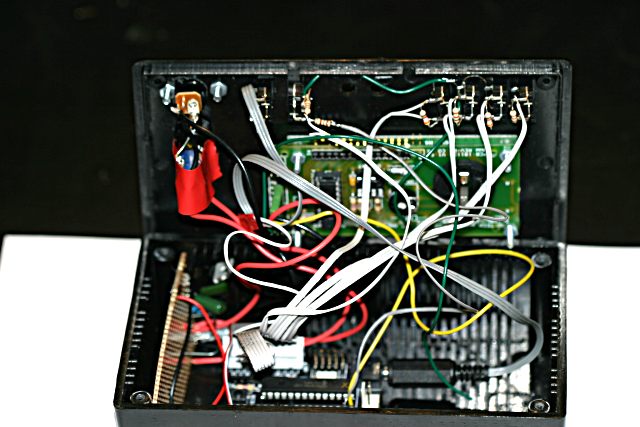
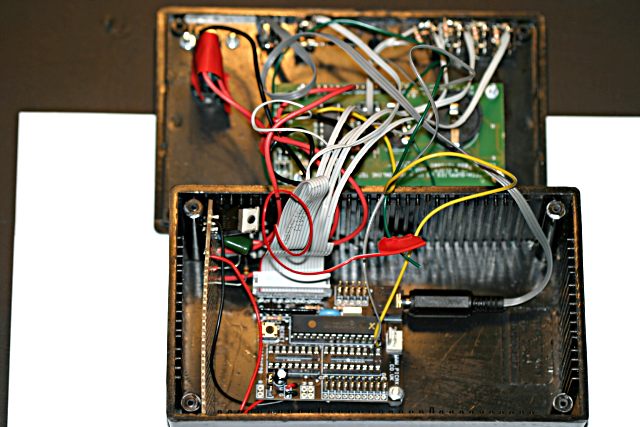
You can see the inside of the 4 temperature logger sockets at the top, with the ribbon cable bringing the signal for each sensor back to one of the I/O sockets on the microcontroller board.
The small board that's mounted vertically on the left is a 5v voltage regulator that is used to supply power to the LCD display (shown at the top). This way I can supply 12v to the box instead of having to supply separate 12v and 5v rails.
The yellow wire is the serial line connection from the microcontroller board (bottom) to the LCD display board (top). When I want to make stuff appear on this LCD I write data to that line (line 7).
The less said about the construction of this box the better...